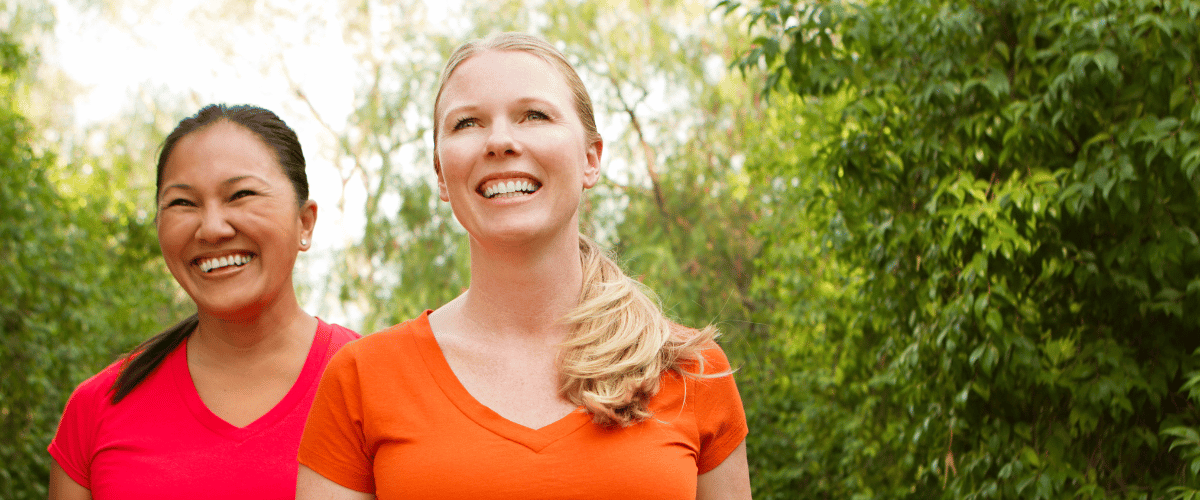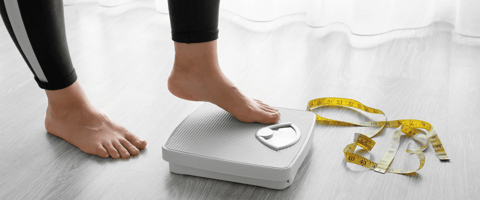The Mental Side of Getting Fit

Whether you are a new fitness enthusiast, a seasoned athlete, or somewhere in the middle, we all have in common the mental struggle of talking ourselves into showing up for the next workout. It’s helpful to remember that being fit is not some magical, end goal, but a constant process of becoming.
What determines whether someone is successful with their exercise intentions?
Getting and staying fit is about developing habits, not spurts of effort. It’s a process of developing an ongoing health-lifestyle, not an end goal, or a magical state-of-being that will never change. It’s a constant process that requires a certain amount of discipline to make it habit.
People who find ways to move their body that they enjoy, and that fit their preferences, lifestyle, and limitations, are more likely to stick with the process long-term.
Here are some tips for becoming the kind of person who makes exercise a permanent part of their lifestyle:
1. GET IN TOUCH WITH YOUR INNER CHILD
Think back to a time in your life when you felt carefree. Think back to when you used to love moving in your body. What image comes to mind?
- Did you used to play a sport when you were younger?
- Did you run around the yard, explore in the woods, jump on the trampoline?
- Do you remember how good it felt to get out pent-up energy from sitting in school all day?
- Do you have memories of playing and laughing with friends?
Hold on to these memories for a few moments. Let your mind wander back and relish feeling carefree and effortless.
Now with these memories in mind, notice how you feel in your body. Do you feel a sense of lightness, of joy, or even giddy-ness?
Here’s a secret: That carefree, fun-loving child is YOU. You are him or her, and your body still craves movement and playfulness.
The first step in creating a “fit” life is to plan to move your body in ways that feel joyful and fun. Throw out any “shoulds” you have associated with exercise (I “should” workout X amount of time; I “should” do X, Y or Z in order for my workouts to be effective). Rather than starting from a self-punishing place of “should”, start from a place of inner-awareness and respect: How DO YOU want to move your body? What sounds fun, liberating, or exhilarating to you?
2. MAKE “HABITS”, NOT GOALS
I often hear clients tell me that they’re only motivated to exercise when they have something to train for. I do not discourage training for a road race or physical competition, but if that is your ONLY motivation, then you are likely to stop exercising once the event is completed.
Rather than focusing on the end goal, focus on what is “up-stream” of that goal–what small behaviors and habits will ultimately bring you to achieving that goal?
For example, if you’re wanting to run a 5K, what’s the first step to achieving that goal? You might say going for a run, but I would say there are behaviors even more “up-stream” of venturing out on the first run, such as making room in your schedule for exercise, setting your alarm, setting out your running clothes, putting on your running clothes, etc.
In this example, if you get into the habit of setting out your running clothes each evening, so first thing in the morning you are reminded of your intention to go for a run, then you are more likely to keep the habit of running once you’ve achieved your ultimate goal.
Think CONSISTENCY OVER QUANTITY. When you’re trying to establish a habit, doing that thing in *tiny* amounts daily (or regularly) will help you establish the goal as a habit. This is more effective for establishing a habit rather than if you did the behavior in spurts and fits.
In other words, running 5 minutes per day every day is more beneficial than running 30 min once per week if your ultimate goal is to wire the brain to be in the HABIT of running.
3. Remember What’s NORMAL
It’s NORMAL for it to be difficult to get started with an exercise habit.
It’s NORMAL for exercise to feel challenging and even sucky when you first start.
It’s NORMAL to lack motivation, and to want to talk yourself out of a workout.
It’s okay.
Everyone struggles to adapt to a new routine. And everyone struggles with soreness, increased appetite, and fatigue when starting an exercise program.
The positive aspects of exercise are delayed. It takes a month or more for the soreness to subside, the mood-boosting effects of exercise to kick in, and for potential weight loss to occur.
Remembering these things doesn’t make exercising easier in the beginning, but it helps to stay focused on the habit at hand, knowing that the payoffs are around the corner.
If you want to change the status quo, you’re more likely to move your body when your expectations are SMALL and Do-able.
4. Challenge “ALL-OR-NOTHING” Thinking
The last tip I’ll leave you with, and one I’ll expand on much more in later articles, is that one of the biggest saboteurs of getting fit is “All-or-Nothing” thoughts. Thoughts like:
- It’s raining so I can’t go for a walk so I can’t exercise today.
- I need to get in better shape (or lose some weight) before I join a gym.
- I don’t have an hour to exercise so I can’t do anything at all.
- I’ve eating horribly so I’m not going to do anything.
- I’ve gotten out of the exercise habit and I feel so badly about that…and therefore I’m going to continue doing nothing.
You get the point?
I think we’ve all had All-or-Nothing thoughts to some degree. Even regular exercisers and “fit” people have such thoughts from time to time. The difference between those who become “fit”, or who make exercise a habit, and those who *wish* they would get started, is that the habitual exercisers don’t buy too much in to All-or-Nothing thinking.
They develop strategies for not believing the negativity. I’ll expound on this more later, but for now, a simple way to break it down is to say, “Fake it till you make it”…but in small ways. The idea is to get your feet moving in the direction of your intentions, so if you intend to try out a new dance class, but you’re tired after work and start talking yourself out of it, try making the smallest effort at “faking it”, or at pretending like you feel like going to the class.
It can be helpful to overcome “All-or-Nothing” thinking by asking yourself:
- What would I be doing if I didn’t feel weighed down by All-or-Nothing thoughts?
- How would I be acting if I actually felt like getting up and moving?
- What would be the FIRST small step I would be taking right now?
And then challenge yourself to try to do that small step. It might be turning off the TV and going into the bedroom (presumably to change clothes). It might be getting the leashes for the dogs (presumably to take them for a walk). It might be calling a friend (presumably to arrange to meet at the dance class). Once you’ve taken that first small step, see what next small step you might challenge yourself to take, and so on, until you find yourself moving your body.
All that said, there are times when our bodies and brains legitimately need a break, so just because you are protesting a work-out does not mean you are whimpy. As you live more in alignment with your higher intentions, you will also be able to discern more clearly when you are in excuse-mode, vs. when you are truly needing a break.
Here’s a clue: you are living in alignment with your higher intentions when Guilt and Resentment are replaced with Peace and Satisfaction.










LEAVE A COMMENT